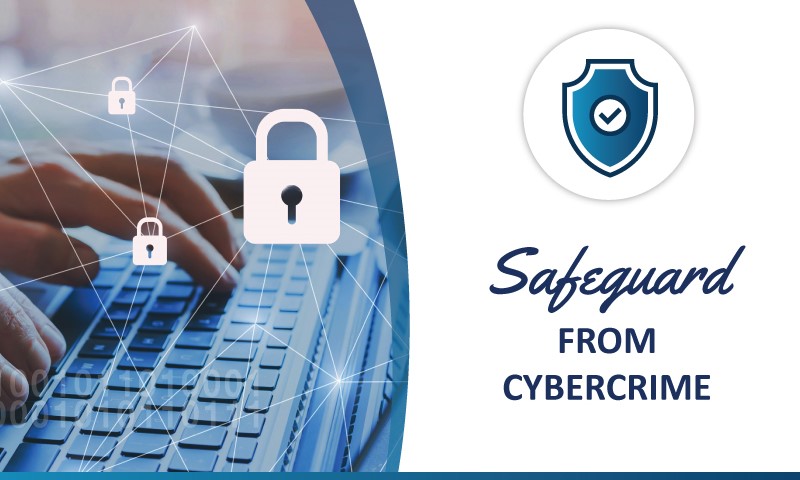The Bottom Line
Small business is important to Central Oregon, and to Mid Oregon. Find tips and resources for business, and information about Mid Oregon’s commercial services and business members.

2021 RECORD BREAKING HOLIDAY DOUGH!
Our Holiday Dough branch fundraiser concluded at the end of November, and the amounts raised were the most ever. With the donations received, we achieved a record breaking Holiday Dough through the generosity of our members and local community!
Closing In On $9,000 in Donations
Our branches collected $8,931.72 in donations, exceeding last year’s previous record of $8,691, and nearing three times 2019’s fundraising total of $3,480. We received donations ranging from a few pennies, all the way up to $500 donations by individuals and businesses.
In this year of uncertainty, we were gratified by our member’s and community’s generosity and willingness to give. For two difficult years in a row, they have risen to the challenge, and to the need.
Many Smaller Donations Help Record Breaking Holiday Dough
Traditionally, Mid Oregon’s Holiday Dough fundraiser invites members to make small cash contributions at the branches to assist local food pantries with holiday meals. And that was again the case, with hundreds of smaller donations. In our La Pine Branch alone, 169 people contributed to the record breaking Holiday Dough branch total of $4,000 of donations: an amazing amount and number of participants.
In 2020 we introduced another option. We launched an online form to make it easier for members to donate without having to visit a branch. In using the form, you came through again this year!
We also had several large donors, with $500 donations each being made in Prineville, Madras, La Pine and Sisters. We are thankful for all of the generous donors, with large and small amounts!
Supporting Non-Profits Around Central Oregon
Mid Oregon was proud to partner with these local non-profits to provide holiday meals for local families in need:
- Bend (Olney and E Bend) – The Giving Plate services include: Monthly Food Box program, Grab & Go Pantry, Kid’s Korner food bank, & Backpacks for Bend.
- Redmond – Jericho Road providing shelter, food and clothing to those in need within the Redmond area
- Madras – Jefferson County Food Bank supplying food to families and individuals
- Prineville – Crook County Holiday Partnership providing holiday support to seniors, children and families in need in Crook County
- La Pine – La Pine Christmas Basket Association providing food during the Christmas holiday for people in the South Deschutes County area
- Sisters – Sisters Kiwanis Food Bank giving food vouchers, holiday children’s gifts, and more to local families
In spite of the record breaking Holiday Dough fundraiser, the needs continue. To help fill those needs, please contact each of those organizations if you would like to continue to support their efforts in 2022!

End-of-Year Car Buying Is A Great Time
Five Reasons Why End-of-Year Car Buying Is A Great Time
Is a new car, SUV or truck on your radar? New vehicles have been in short supply this year, providing fewer chances for good deals. Making your purchase prior to January 1st might be the way to go. End-of-year car buying is a great time!
Better Opportunity for Bargains
Rushing to buy any vehicle at any time is never a good option. Some auto experts expect the market to ease up as we head toward 2022. Here is why getting it done now would make sense:
- 2022 model year vehicles are generally now available, making 2021 new vehicles old inventory. Keep in mind low inventory will lessen that impact.
- New model year changes, while often just cosmetic, can reduce demand on the previous years model. If it’s not important to you, it may just save you some money.
- Customer cash incentives are typically higher in the summer and winter months. You may find a winter rebate or discount is available on the make and model you want.
- Buying around the last day of the month is usually a good idea no matter the month. Dealers are often eager to meet monthly sales quotas.
- December is the end of the tax year. Dealers might be clearing out some inventory for tax reasons.
But You Have to Be Prepared
Many of us spend more time exploring a clothing purchase than our next new vehicle. To make the best decision requires research, and preparation. Here are a few quick guidelines to make your buying successful:
- What is affordable? Before you set foot in a dealership or look online, make sure you know how much you can reasonably afford. Although monthly payments are one way to look at it, focus on the purchase price of the vehicle. Don’t forget about other expenses, such as licensing, registration, gasoline, maintenance and repairs.
- Get loan pre-approval. Get approved for a Mid Oregon loan before visiting any dealership. Just because you’re preapproved for a certain loan amount, doesn’t mean you have to get a loan for that amount. Remember your budget. How much of a down payment will you have?
- Educate yourself. Learn about options, pricing, and future functionality of the cars you’re considering. Many websites are available to help. You can also look at dealership websites and inventory for ideas and prices. Decide what vehicle you want in advance. Keep in mind that lower inventories usually mean higher prices.
- Don’t go alone. Take someone with you to the dealerships. Even if they don’t know much about cars, they can be a voice of reason and point out things you miss as you look at cars. Also, be willing to walk away from a bad deal.
- Negotiate Wisely. Discuss and determine the purchase price (not payments) first. Then if you have a trade-in, the value they will give you. Last, you can compare your pre-approved financing to their options. And speaking of options, Mid Oregon normally has better prices on vehicle safeguards options like Guaranteed Asset Protection (GAP) Plus, Mechanical Repair Coverage (MRC) and Borrowers Security. You can learn more about these during your pre-approval.
What About a Vehicle Loan?
We would love to discuss your vehicle financing needs, and help you determine your car buying budget. You can stop in at any Central Oregon branch, Email our local Contact Center, or check out details on our website. You can even do your loan application online. Good vehicle hunting!
Read more Mid Oregon View articles on auto buying!

Safeguard from Cybercrime- Yourself and Your Loved Ones
You’ve heard the words describing how hackers and scammers gain access to online information. But do you know what they really mean? Phishing, Smishing, hacking, spam? Here’s a short guide to explain cybercrime terms and how to keep your data safe: safeguard from cybercrime yourself, and your loved ones.
Here’s a guide outlining classic online fraud attempts to help you safeguard from cybercrime and stay cybersecure.
Phishing Emails
Phishing attacks normally use emails with malicious website links within the email. They gain access to your computer, and in turn, your accounts. Here’s how it works: You receive an enticing email about a great deal on a product or an urgent message. You need to act on it immediately, and within it are links to a counterfeit website. Once you click the link, scammers trick you into giving financial data, such as user names and passwords. Some phishing attacks plant malware in the email itself. Once it’s opened, the criminal can steal credentials directly from your computer.
How to avoid: Do not open any emails you don’t recognize and don’t click on any links within an email you don’t recognize coming from a person or company you know. If you are asked to visit a website that seems like it’s one you’re familiar with, check the URL. Because, many times a counterfeit URL will use the company name and .net or .biz instead of .com — a slight but important difference. However, note that a URL with a .com suffix is not always safe. If you question the email, pick up the phone and call the company to see if the email is legit.
Social Media Phishing
Phishing isn’t limited to email. Cybercriminals also create links in social media through online ads, tweets, and posts, promising something that is too good to be true. What’s really happening is that they’re trying to gain access to your personal data and accounts once you click the link. If it looks at all suspicious, it most likely is.
How to avoid: Don’t click on the link. As the National Cybersecurity Alliance urges: “When in doubt, throw it out.”
Spam — No, It’s Not Pressed Meat
Spam in your inbox is no different than junk mail in your mailbox. It’s unsolicited, unrequested and unwanted email, and its purpose is to get you to open it for malicious purposes.
How to avoid: Enable a spam filter from your email provider to prevent unwanted messages from reaching your inbox. Be sure and report any spam emails that make it through. Hide your email address from any online profiles and social media accounts. You can also check for spam detectors on your cell phone or through your carrier, which indicate whether an incoming call is likely spam.
Smishing
Text message scams — also known as “smishing” — became a prevalent form of phishing a couple of years ago. It’s a phishing attack delivered via text message. This scam sends an urgent text message to your phone, trying to get you to click on a link within the text, text back requested information or call a fraudulent number. It’s especially used with people who do online banking or bill pay. Examples include receiving a message that states your account, debit or credit card has been suspended and to click on the link included within the text to unlock it. Or you may receive a message to verify account information, or to transfer money to a stranded relative.
How to avoid: Do not click on any link or phone number within a text message unless you’re sure what it’s for. If you receive a message about a frozen or locked bank account or account verification, pick up the phone and call your credit union to verify its legitimacy.
Malware
This term refers to harmful software that hackers try to install on your computer through a variety of means. Malware contains viruses — sometimes ransomware for businesses — that can take control of your computer, monitor your actions and keystrokes, and gain access to personal data stored on your computer.
How to avoid: Once again, it’s all about what you don’t do. Don’t open any suspicious emails, click on any links, or download any files you don’t recognize.
Preventing Identity Theft Webinar
Join us for a FREE webinar, Preventing Identity Theft, presented by the Deschutes County Sheriff’s Office Digital Forensics Team. It will be held Thursday, December 9 at 10 a.m. Register for this virtual workshop, and learn how to recognize potential scams, the ploys suspects use to gain personal information, and common-sense steps you can take to protect your identity.
Get the Latest Information
Want to keep up with the latest security information? Visit our Security and Fraud Prevention page. There you can view the latest articles, search by topic, and sign up for ongoing Stickley on Security emails.
Read more Mid Oregon View articles about cybercrime and online fraud, to safeguard from cybercrime.
